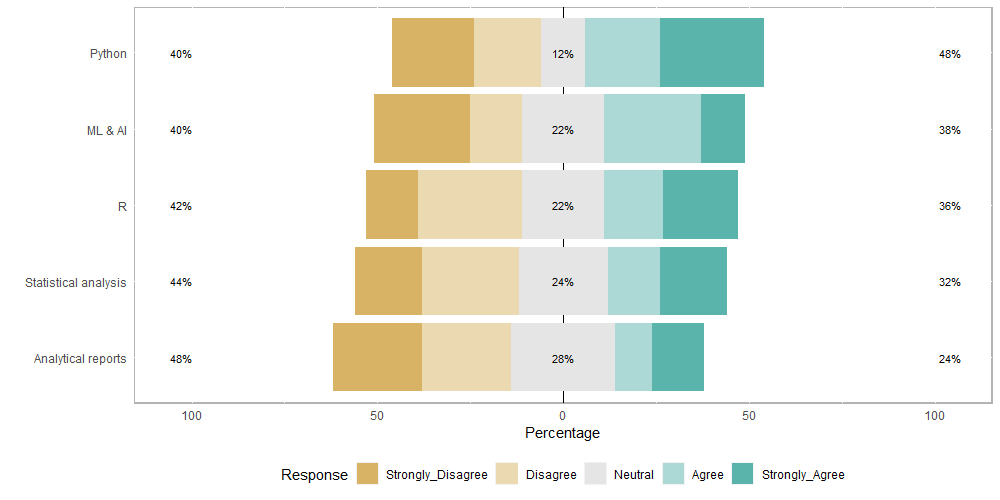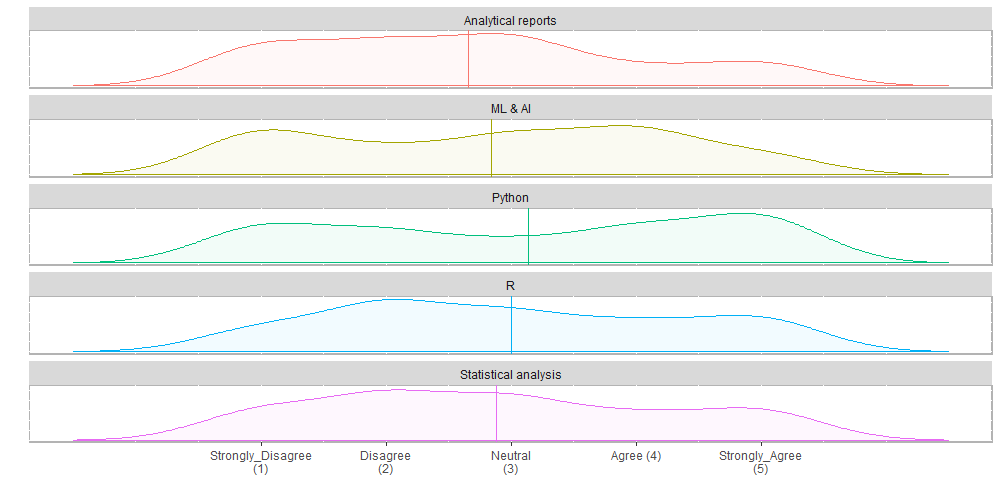
لتصوير بيانات الاجابات على مقياس ليكرت في الدراسات الإحصائية يمكن استخدام مكتبة (likert) وهي حزمة في لغة البرمجة آر R تعرض نتائج ليكرت جنبًا إلى جنب مع مخططات الكثافة لمساعدة الباحثين في تحديد ما إذا كان يمكن استخدام الاجابات على مقياس ليكرت من الناحية الكمية بدلاً من النوعية. لتوضيح القيام بذلك سوف نستخدم البيانات (Likert_data) ثم نتبع الخطوات التالية:
1. تحميل المكتبة (likert):
In:
library("likert")
2. استيراد البيانات:
In: df = read.csv("Likert_data.csv",check.names=FALSE) head(df) Out: ID R Python Statistical analysis Analytical reports ML & AI 1 1 Agree Disagree Strongly_Disagree Strongly_Disagree Agree 2 2 Strongly_Disagree Strongly_Agree Disagree Strongly_Agree Agree 3 3 Agree Strongly_Disagree Neutral Strongly_Disagree Strongly_Disagree 4 4 Neutral Neutral Strongly_Disagree Neutral Strongly_Disagree 5 5 Strongly_Agree Disagree Disagree Strongly_Disagree Strongly_Agree 6 6 Strongly_Agree Agree Neutral Neutral Strongly_Disagree
3. تهيئة البيانات:
In:
df=df[,2:6]
levels = c("Strongly_Disagree", "Disagree", "Neutral", "Agree", "Strongly_Agree")
index = 1:ncol(df)
df[ ,index] = lapply(df[ , index], function(x) factor(x, levels = levels))
4. استخدام مكتبة (likert):
In:
out = likert(df)
5. تصوير البيانات:
5.1 باستخدام (rstacked ba):
In: plot(out) Out:
5.2 باستخدام (heat map):
In: plot(out, type="heat", low.color = "white", high.color = "red") Out:
5.3 باستخدام دالة الكثافة (density function)
In: plot(out, type="density") Out:

